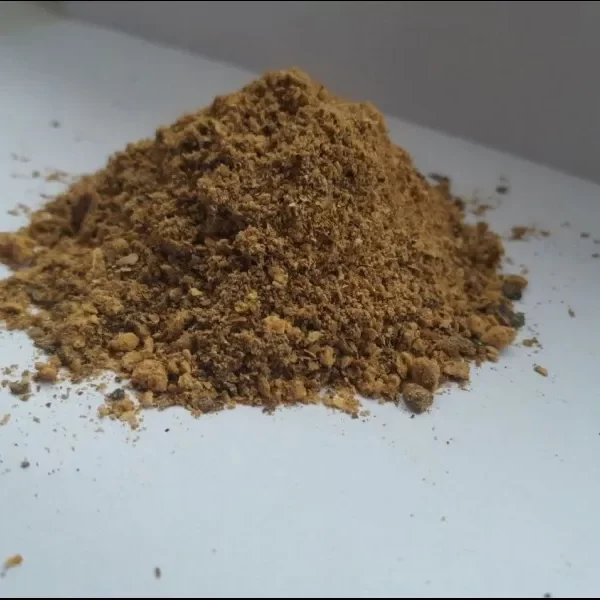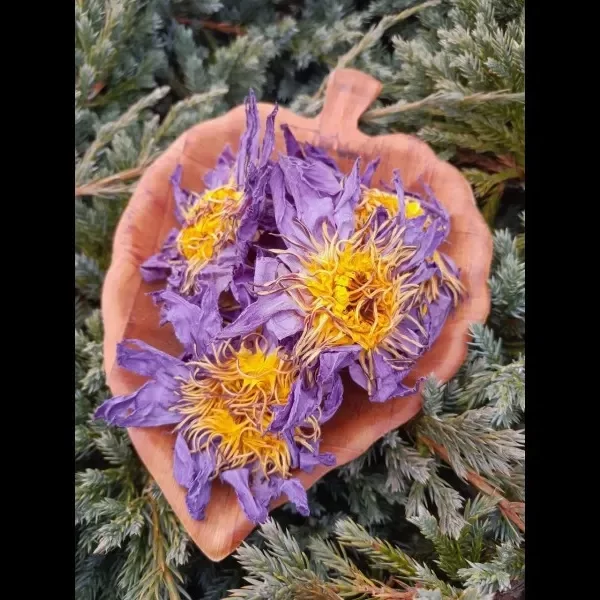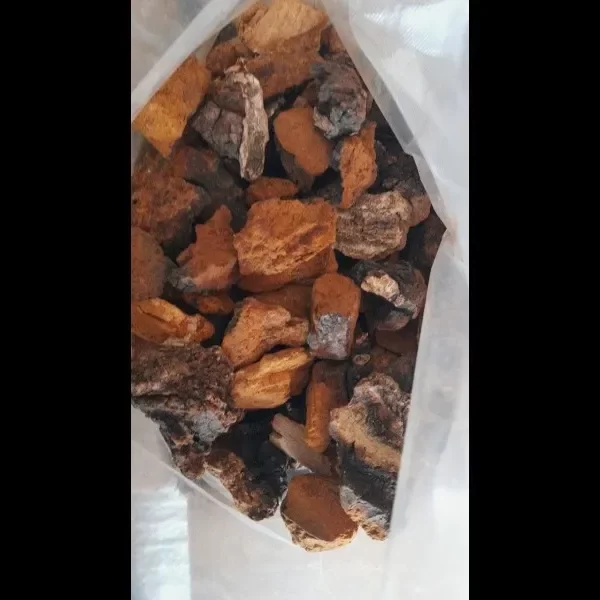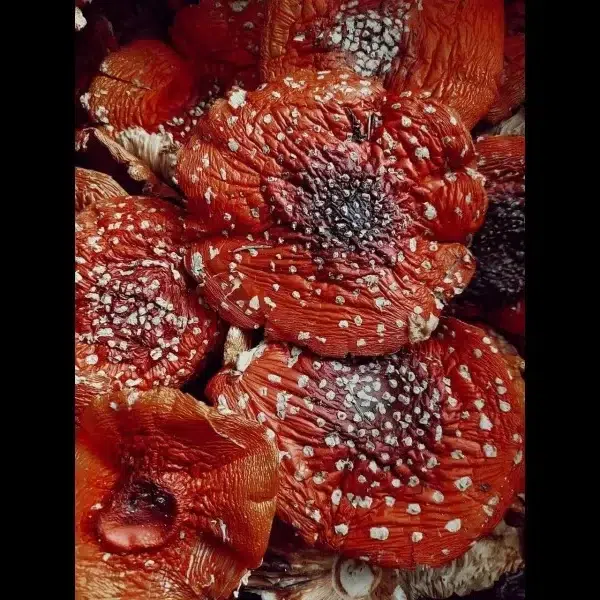Fly agaric effects describe the physical and neurological responses that can occur after consuming Amanita muscaria, a red-capped mushroom with white spots. Effects may include drowsiness, confusion, nausea, and muscle twitching. Known for its historical use in various cultures, fly agaric carries potential risks, and its consumption is generally discouraged due to unpredictable effects on health.
This article examines the fly agaric mushroom from a research-based perspective, focusing on its structure, unique characteristics, and significance across various historical contexts. Studies continue to explore the neurological responses associated with this mushroom, alongside an analysis of potential risks and considerations regarding its handling. Additionally, its place in cultural history offers insight into how societies have perceived and symbolized Amanita muscaria over time.
By grounding our discussion in scientific research and cultural analysis, this overview aims to provide a well-rounded understanding of the fly agaric mushroom. Through careful study and exploration, we uncover the scientific and cultural dimensions of this fascinating species without encouraging its consumption, highlighting the importance of safe, informed, and respectful approaches to interacting with nature.
What is Fly Agaric?
Amanita muscaria, commonly known as the fly agaric or fly amanita, is a basidiomycete mushroom of the genus Amanita. Recognized by its large, white-gilled structure and typically red cap dotted with white spots, it is one of the most visually iconic mushrooms in nature. This species is native to temperate and boreal regions across the Northern Hemisphere, and it has been unintentionally introduced to parts of the Southern Hemisphere, often coexisting as a symbiont with pine and birch plantations. [9].
Fly Agaric Varieties and Habitat
The fly agaric includes several subspecies, some of which feature yellow or white caps instead of the more common red. Despite these variations, they are all generally grouped under the name “fly agarics” due to their shared characteristics, particularly the white spots. These mushrooms often reappear in the same locations over successive years and are commonly found in woodlands across Britain, Ireland, Europe, Asia, North America, and Canada. [7].
Fly Agaric Usage as an Insecticide
The name “Fly Agaric” originates from its traditional use as a natural insecticide in some European regions. Historically, the caps of Amanita muscaria were crumbled into milk to attract house flies, which would consume the mixture and succumb to the ibotenic acid it contained. This practice highlights an early and creative understanding of the mushroom’s effects on insects, providing a unique glimpse into traditional pest control methods. [7].
Fly Agaric Neuroactive Compounds and Potential Neurological Responses
The primary bioactive compounds in Amanita muscaria mushrooms include muscimol, ibotenic acid, and trace amounts of muscarine. Unlike psilocybin-containing mushrooms, Amanita muscaria‘s neurological effects are primarily linked to muscimol and ibotenic acid. These compounds are under study for their potential impacts on the central nervous system, where they may influence neural responses that researchers are keen to understand in relation to conditions like anxiety and neurodegenerative disorders. [7] [10]
Fly Agaric Legal Status and Medicinal Research
In many regions, Amanita muscaria mushrooms remain unregulated, as their active compounds are not listed under controlled substances in jurisdictions such as the United States. Ongoing research is investigating their bioactive compounds, with studies suggesting potential medicinal applications, such as supporting stress management, muscular relaxation, sleep enhancement, and neuroprotection. Emerging evidence has also highlighted potential anti-tumor and memory-supportive effects, marking an area of considerable scientific interest. [10]
Fly Agaric Neurological Mechanism of Action
The neuroactive properties of muscimol and ibotenic acid, both found in fly agaric, are tied to their structural similarity to neurotransmitters involved in the central nervous system. Muscimol acts as an agonist for GABAA receptors, while ibotenic acid interacts with NMDA and metabotropic glutamate receptors. These interactions are being studied for their ability to affect neurological pathways associated with conditions that impact mental and physical well-being. Upon metabolism, ibotenic acid is transformed into muscimol, enhancing its role in neurotransmitter activity modulation, and creating pathways for researchers to explore their effects on the brain’s neural communication and neuroplasticity.
By focusing on these compounds’ neurological pathways, researchers aim to gain insights into how fly agaric influences neurochemistry, advancing our understanding of potential therapeutic applications without promoting consumption.
Varieties of Observed Neurological Responses
Research into Amanita muscaria suggests that its bioactive compounds, particularly muscimol and ibotenic acid, interact with the central nervous system in complex ways. These interactions may affect sensory perception and cognitive processes, sometimes resulting in altered visual or auditory experiences and changes in spatial awareness, such as dysmetropsia, where perception of size or distance may feel distorted. Laboratory observations have noted responses like vivid color perception, unusual sound recognition, and variations in awareness, which are of interest in neuropsychological studies. Some reports indicate that these experiences can oscillate between heightened sensory perception and disorientation, occasionally accompanied by muscle twitches or balance disturbances.[15] [19].
Potential Health Risks and Side Effects
Ingestion of Amanita muscaria poses potential health hazards due to its effects on the central nervous system, which can vary from overstimulation to temporary suppression of neurological functions. Reported symptoms range from confusion, dizziness, and lack of coordination to more severe effects, including significant disorientation and balance issues. Documented cases of animal poisoning underscore the potential danger associated with unmonitored exposure to the mushroom’s compounds, reinforcing the importance of caution in any interaction with this species. [7, 9, 11]
Symptoms of Toxic Exposure
Symptoms of Amanita muscaria toxicity typically appear within 30 minutes to 2 hours of exposure. Initial symptoms often include confusion, dizziness, and agitation, which may progress to visual and auditory distortions and challenges with spatial orientation and time perception. Physical symptoms can include nausea, abdominal discomfort, and gastrointestinal distress, and in rare cases, cardiovascular irregularities such as changes in heart rate and body temperature. The duration of these symptoms generally spans 5 to 24 hours, although severe cases with prolonged symptoms have been documented. Researchers stress the importance of understanding these effects to better inform public health guidance on avoiding toxic exposure. [1][3][7][2][12].
Safe Handling and Research Guidelines
Given the known risks associated with Amanita muscaria, strict guidelines are essential for anyone handling this mushroom for research or study purposes. Raw consumption is strongly discouraged due to its toxic compounds, which can pose significant health risks. Traditional preparation methods, such as boiling in salted water, have been noted in some studies to reduce certain toxins, though this does not eliminate all risks. Additionally, it is advisable to avoid use entirely in vulnerable populations, including pregnant women and individuals with pre-existing health conditions. Immediate medical attention should be sought if symptoms of toxicity occur following accidental ingestion or exposure. [13][14].
Historical and Cultural Significance
The fly agaric mushroom holds deep cultural roots, having been integral to various traditional practices worldwide. In Siberia, Amanita muscaria was central to some shamanistic rituals, where shamans used the mushroom to achieve specific states of consciousness crucial to their spiritual and healing practices. Beyond shamans, certain Siberian communities also engaged with the mushroom as part of cultural customs. The Koryak people, for example, regarded it as sacred and developed unique customs surrounding its use, highlighting its prominence in local folklore and spiritual traditions. [33][38].
In other regions, such as Scandinavia and parts of Eastern Europe, Amanita muscaria found a place in traditional medicine, valued for its purported analgesic, anti-inflammatory, and anxiolytic properties. Among Siberian reindeer herders, it was used as a stimulant to combat physical exhaustion, demonstrating the mushroom’s role as a resource in historically challenging environments. [31][39].
Mythology and Folklore
Fly agaric mushrooms have also woven their way into mythology and folklore, contributing to cultural narratives across different continents. A Koryak legend, for example, tells of the deity Vahiyinin, or “Existence,” whose saliva created the fly agaric mushrooms, symbolizing their sacred status. In Norse mythology, it is suggested that Viking Berserkers consumed Amanita muscaria to enter a fearless, frenzied state before battle, emphasizing its perceived potency and mythical power. Additionally, the mushroom is often linked to the Santa Claus legend, as certain Siberian shamans would don red and white attire, resembling Amanita muscaria, during winter solstice rituals. [33][35].
Modern Cultural References
In contemporary times, the fly agaric mushroom remains a symbol of mystery and enchantment in popular culture. Its distinctive appearance frequently appears in garden ornaments, children’s literature, and fantasy-themed media, often depicted as a magical element or background. Examples include the Super Mario Bros. video game series, where mushrooms similar to Amanita muscaria inspire power-ups and game aesthetics, and Disney’s Fantasia, where whimsical mushrooms dance in enchanting scenes.
These cultural references underscore the fly agaric’s enduring allure, bridging historical significance and modern symbolism in ways that continue to captivate audiences worldwide. [37].
Conclusion
In exploring the fly agaric mushroom, we uncover its rich cultural, historical, and scientific dimensions, showing Amanita muscaria as a complex symbol of both fascination and caution. Its history reveals an intricate relationship with humanity, from revered cultural roles to modern scientific curiosity, underscoring the need for careful handling. This journey highlights the mushroom’s significance beyond folklore, prompting discussions on cultural heritage, medicinal potential, and safe study practices.
The vivid image of Amanita muscaria invites respectful study, appreciating its role in human history while advancing scientific inquiry. This balanced perspective reaffirms the mushroom’s place as a symbol of natural wonder and scientific exploration.
What does the fly agaric mushroom look like?
The fly agaric mushroom, or Amanita muscaria, typically emerges near trees like firs and spruces, especially around the winter solstice. It is characterized by a cap that ranges from dark red to reddish-orange, adorned with creamy-white spots scattered in an irregular pattern, making it one of the most recognizable mushrooms in nature.
What are the effects of exposure to Amanita muscaria?
Exposure to Amanita muscaria can affect the central nervous system. Symptoms, which may appear within 30 minutes to 2 hours, include confusion, dizziness, agitation, and lack of coordination (ataxia). These effects underscore the importance of handling this mushroom with caution.
How does Amanita muscaria contribute to the ecosystem?
Amanita muscaria plays a vital ecological role through mycorrhizal associations, mainly with birch trees but also with other tree species. This partnership helps trees access nutrients more effectively and contributes to nutrient recycling from decaying organic matter, supporting forest health. Additionally, it provides shelter and food for various forest animals.
How is fly agaric represented in popular culture?
Due to its distinctive and enchanting appearance, the fly agaric mushroom is a frequent subject in popular culture, especially in children’s literature, where it is often depicted as a magical home for fairies or mythical creatures. This portrayal enhances its association with the mystical and fantastical, making it a cultural icon in fairy tales and fantasy media.
References
[1] – https://www.woodlandtrust.org.uk/trees-woods-and-wildlife/fungi-and-lichens/fly-agaric/
[2] – https://www.fs.usda.gov/wildflowers/ethnobotany/Mind_and_Spirit/flyagaric.shtml
[3] – https://treesforlife.org.uk/into-the-forest/trees-plants-animals/others/fly-agaric/fly-agaric-mythology-and-folklore/
[4] – https://www.webmd.com/vitamins/ai/ingredientmono-190/fly-agaric-mushroom
[5] – https://www.fs.usda.gov/wildflowers/ethnobotany/Mind_and_Spirit/flyagaric.shtml
[6] – https://chacruna.net/fly-agaric-amanita-muscaria-traditional-modern-therapeutic-uses/
[7] – https://www.first-nature.com/fungi/amanita-muscaria.php
[8] – https://www.woodlandtrust.org.uk/trees-woods-and-wildlife/fungi-and-lichens/fly-agaric/
[9] – https://en.wikipedia.org/wiki/Amanita_muscaria
[10] – https://www.acslab.com/mushrooms/amanita-muscaria-vs-psychedelic-mushrooms
[11] – https://www.quora.com/What-is-the-difference-between-magic-mushrooms-and-Amanita-muscarina
[12] – https://www.seattlemet.com/discover/magic-mushrooms/amanita-muscaria-look-alikes/
[13] – https://www.sciencedirect.com/topics/neuroscience/amanita-muscaria
[14] – https://pharmacia.pensoft.net/article/56112/
[15] – https://en.wikipedia.org/wiki/Amanita_muscaria
[16] – https://www.sciencedirect.com/topics/neuroscience/amanita-muscaria
[17] – https://www.ncbi.nlm.nih.gov/pmc/articles/PMC10130647/
[18] – https://www.ncbi.nlm.nih.gov/pmc/articles/PMC7977045/
[19] – https://www.seattlemet.com/discover/magic-mushrooms/amanita-muscaria-trip/
[20] – https://www.ncbi.nlm.nih.gov/pmc/articles/PMC10142736/
[21] – https://www.woodlandtrust.org.uk/trees-woods-and-wildlife/fungi-and-lichens/fly-agaric/
[22] – https://www.ncbi.nlm.nih.gov/pmc/articles/PMC10142736/
[23] – https://www.ncbi.nlm.nih.gov/pmc/articles/PMC7977045/
[24] – https://www.webmd.com/vitamins/ai/ingredientmono-190/fly-agaric-mushroom
[25] – https://www.ncbi.nlm.nih.gov/pmc/articles/PMC7977045/
[26] – https://www.colorado.edu/asmagazine/2021/08/31/fly-agaric-and-related-death-cap-mushrooms-synthesize-dangerous-chemicals
[27] – https://www.betterhealth.vic.gov.au/health/healthyliving/mushroom-poisoning
[28] – https://www.fs.usda.gov/wildflowers/ethnobotany/Mind_and_Spirit/flyagaric.shtml
[29] – https://www.woodlandtrust.org.uk/trees-woods-and-wildlife/fungi-and-lichens/fly-agaric/
[30] – https://gallowaywildfoods.com/fly-agaric-edibility-identification-distribution/
[31] – https://www.fs.usda.gov/wildflowers/ethnobotany/Mind_and_Spirit/flyagaric.shtml
[32] – https://chacruna.net/fly-agaric-amanita-muscaria-traditional-modern-therapeutic-uses/
[33] – https://treesforlife.org.uk/into-the-forest/trees-plants-animals/others/fly-agaric/fly-agaric-mythology-and-folklore/
[34] – https://treesforlife.org.uk/into-the-forest/trees-plants-animals/others/fly-agaric/fly-agaric-mythology-and-folklore/
[35] – https://abeautifulresistance.org/site/2022/10/28/gateway-to-the-otherworld-folklore-of-the-fly-agaric
[36] – https://zoomoutmycology.com/blog/folklore-around-the-amanita-muscaria-mushroom
[37] – https://ultimatepopculture.fandom.com/wiki/Amanita_muscaria
[38] – https://en.wikipedia.org/wiki/Amanita_muscaria
[39] – https://chacruna.net/fly-agaric-amanita-muscaria-traditional-modern-therapeutic-uses/
[40] – https://www.fs.usda.gov/wildflowers/ethnobotany/Mind_and_Spirit/flyagaric.shtml
[41] – https://treesforlife.org.uk/into-the-forest/trees-plants-animals/others/fly-agaric/fly-agaric-mythology-and-folklore/
[42] – https://chacruna.net/fly-agaric-amanita-muscaria-traditional-modern-therapeutic-uses/
[43] – http://bayareamushrooms.org/education/further_reflections_amanita_muscaria.html
[44] – https://akjournals.com/view/journals/2054/6/1/article-p1.xml






